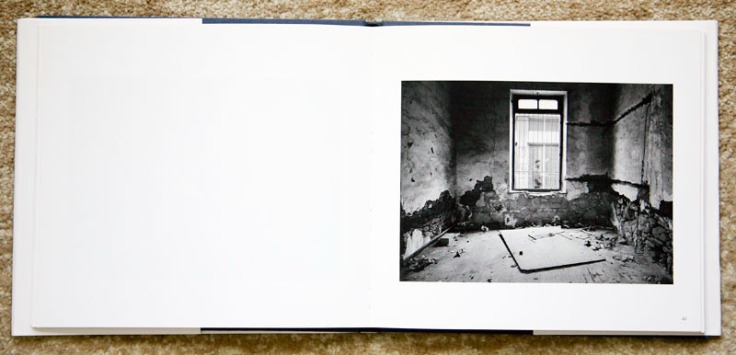Copyright Thodoris Tzalavras 2010 published by Book ex Machina
Thodoris Tzalavras’s photobook titled Nicosia in Dark and White is a haunting story about an abandoned place, a place that represents a victim. It is a place where time seems to have stopped, yet obvious that nature continues to takes its course reclaiming the man-built structures and reducing these slowly to dust. This desolate place is not a victim of economics, but of society due to cultures, religion and politics. The location is now the middle ground of a no-man’s land between two intense adversaries.
Tzalavras does not directly confront the adversarial situation that has created this place, but indirectly reveals the underlying tension in a subtle agenda using a documentary style. There is a strong undercurrent of pathos in these black and white photographs.
Likewise, the photographs are ambiguous as to the actually location of this place. Only in the reading of the book’s title or the accompanying essays, does the reader understand where to place this narrative.
I find this book to be similar in spirit as James Clancy’s Border Country, a narrative about a similar border from long ago, for which Clancy states “…as a phrase and as a title for this series of photographs, (it) is my name for an uneasy condition of heart and mind that periodically comes to possess me.” Likewise in Eugene Richards photobook The Blue Room; “As I slowly make my way through the collapsing rooms and begin sifting through what’s been left behind”, Richard writes, “the old places spawn what can only be called memories that come and go in the fragments of broken glass, in the convergence of shadows and light in the dust rising up from the floors.” The back story for Nicosia’s Green Line has not occurred so long ago that the buildings and structures still resemble built structures, but noticeable the decay is gradually occurring, nature is taking its course.
In a number of photographs, Tzalavras captures a person moving past a window and intellectually we can read this blurr as his subject that is moving during a long exposure. Nevertheless, this reads of a ghost, spirit or memory that haunts this place, representing the melancholy that encircles this sad monument to what occurs with cultural differences.
As a book object, the black and white duotone plates are printed and bound very nicely, encased in a clothbound hardcover with dust jacket. The Introduction and short story is by Ioanna Mavrou, a poem by David Alan Harvey and with the text provided in both English and Greek.







Haunting, powerful images…
A sad commentary, beautifully presented.